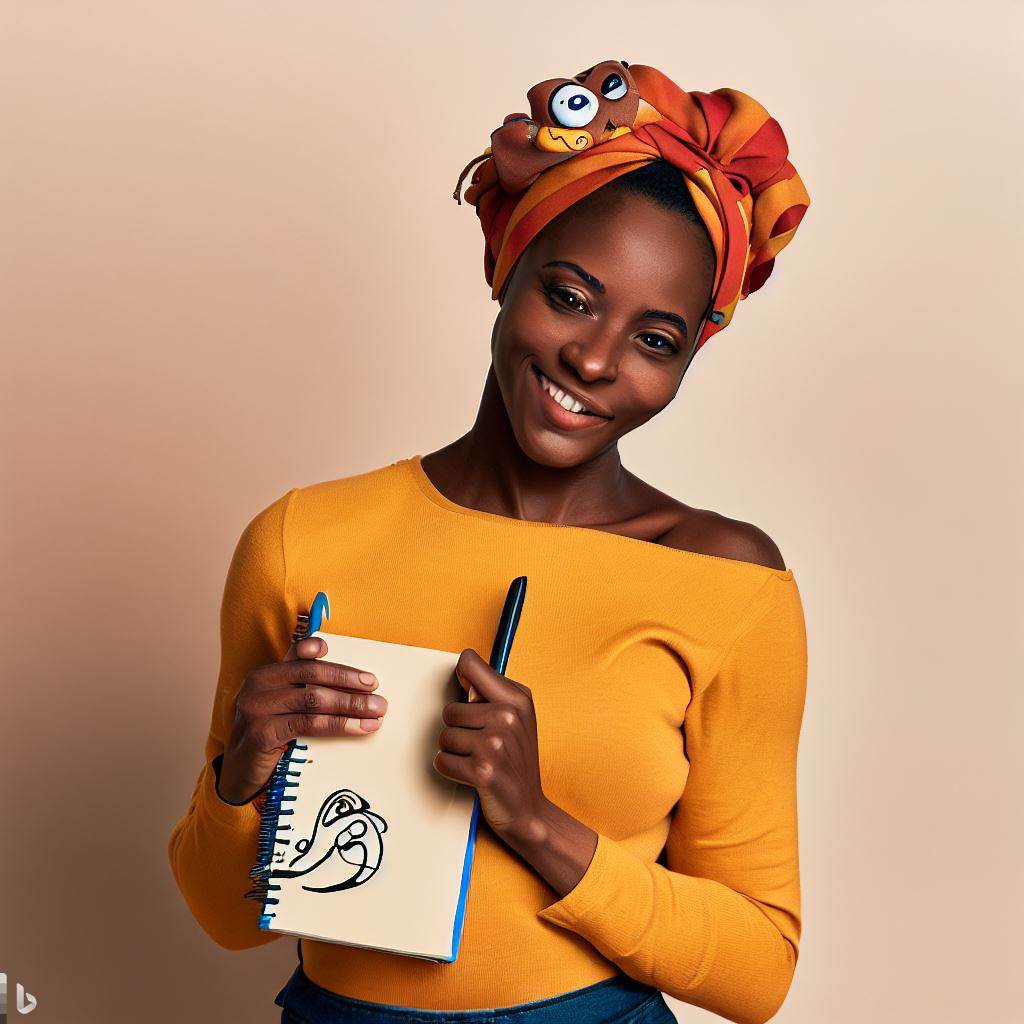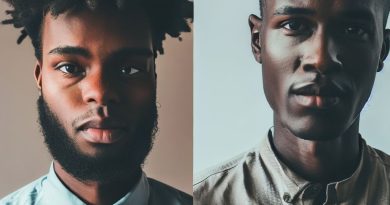Storytelling in Animation: A Nigerian Perspective
Last Updated on January 26, 2024
Introduction
Storytelling in animation is a powerful tool that brings stories to life through visuals and movement.
It allows creators to communicate complex ideas and emotions in a captivating and engaging way.
Cultural perspective plays a vital role in storytelling, especially in animation.
It provides a unique lens through which stories are told, adding depth and richness to the narrative.
It allows for the exploration of cultural values, traditions, and experiences, making stories more relatable and meaningful to specific audiences.
The Nigerian animation industry has grown rapidly in recent years, with talented animators and storytellers emerging.
Nigerian animation showcases the country’s diverse cultures, folklore, and history. It celebrates the richness of Nigerian heritage and fosters a sense of pride and identity.
Nigerian animators are incorporating traditional storytelling techniques into their work, blending them with modern animation styles.
This fusion creates a distinct visual language that resonates with both local and international audiences.
By drawing inspiration from Nigerian folklore and traditions, these animators give a voice to stories that might otherwise go untold.
Furthermore, storytelling in Nigerian animation offers a platform for addressing important social issues such as corruption, poverty, and gender inequality.
It fosters conversations and encourages critical thinking, driving social change in the country.
Basically, storytelling in animation is a powerful means of expression, and the Nigerian perspective adds a unique and valuable dimension to this art form.
Cultural perspective is essential in creating meaningful and impactful stories that resonate with audiences worldwide.
The growing Nigerian animation industry is a testament to the power of storytelling and its ability to shape cultures and inspire change.
Nigerian Folktales and Animation
A. Introduction to Nigerian folktales
Nigerian folktales are an integral part of the rich cultural heritage of the country.
Passed down through generations, these stories serve as a means of entertainment as well as moral and cultural education.
These folktales often feature traditional characters such as tricksters, mythical creatures, and gods.
They are typically told in the oral tradition, keeping the essence of Nigerian storytelling alive.
B. Adaptation of folktales in Nigerian animation
In recent years, Nigerian animators have recognized the potential in adapting these folktales into animated films.
By bringing these stories to life through animation, they are able to preserve and share them with a wider audience.
Animation allows for the visualization of these folktales, enhancing the audience’s engagement and understanding.
Through vibrant visuals and expressive characters, the essence of Nigerian folktales is brought to the forefront.
C. Examples of Nigerian animated films inspired by folktales
1. Tales of the Moonlight
One notable Nigerian animated film that draws inspiration from folktales is Tales of the Moonlight. This film combines traditional storytelling with animation techniques, creating a visually captivating experience.
The film revolves around the adventures of a young boy named Kola, who discovers a hidden world filled with mythical creatures.
As Kola embarks on his journey, he learns important lessons about bravery, friendship, and resilience.
2. The Tortoise and the Hare
Another animated film that takes inspiration from Nigerian folktales is The Tortoise and the Hare.
This adaptation retains the core elements of the original folktale while infusing it with captivating animation and engaging storytelling.
The film tells the story of a boastful hare and a cunning tortoise who engage in a race that tests not only their physical abilities but also their wit.
The moral lessons about pride, perseverance, and humility are beautifully conveyed through the animation.
3. Ananse and the Pot of Wisdom
Ananse and the Pot of Wisdom is yet another Nigerian animated film that showcases the power of storytelling in animation.
The film follows the adventures of Ananse, a famous trickster character in Nigerian folklore.
Ananse embarks on a quest to obtain the pot of wisdom, facing various challenges along the way.
Through animation, the film highlights the importance of wisdom, resourcefulness, and the consequences of greed.
Essentially, Nigerian folktales have found a new medium of expression through animation.
By adapting these stories into animated films, Nigerian animators are not only preserving their cultural heritage but also bringing these tales to a global audience.
The power of animation lies in its ability to visualize and enhance the essence of these folktales, making them more accessible and engaging.
Through films like “Tales of the Moonlight,” “The Tortoise and the Hare,” and “Ananse and the Pot of Wisdom,” Nigerian animation is making a significant contribution to the world of storytelling.
Read: Exploring the Lucrative Career of a Make-up Artist in Nigeria
Cultural Representation in Nigerian Animation
Cultural storytelling through animation is vital for Nigerian heritage preservation. It facilitates global insight into traditions and values.
Animation authentically employs attire, music, language, and customs, forging personal connections. This bridges cultural gaps and enhances appreciation.
Challenges plague Nigerian animation, including Western-derived stereotypes hindering accurate portrayal.
Insufficient funds obstruct quality production and global reach. Inadequate industry diversity results in repetitive, shallow narratives.
Nonetheless, positive instances demonstrate success. “Tales by Moonlight” captivates with traditional stories, safeguarding oral legacy.
“Bino and Fino” imparts African history and pride to youngsters. “Malika: Warrior Queen” defies norms, empowering women and spotlighting history.
In a nutshell, cultural representation in Nigerian animation is pivotal to preserve and promote heritage.
Overcoming stereotypes, securing funding, and embracing diversity are crucial.
Successful models like “Tales by Moonlight,” “Bino and Fino,” and “Malika: Warrior Queen” signify progress. Nigerian animation advances its rich heritage worldwide.
Read: How Nigeria’s Foley Artists are Redefining Sound in Cinema
Nigerian Animation Techniques
A. Introduction to unique animation techniques in Nigeria
- Nigerian animation explores diverse and distinctive techniques that set it apart from other styles.
- Using a combination of traditional art forms and modern technology, Nigerian animators create visually captivating animations.
- These techniques allow Nigerian animation to tell stories that are deeply rooted in the country’s culture and traditions.
B. Comparison to Western animation techniques
- Unlike Western animation, Nigerian animation emphasizes vibrant colors and intricate patterns inspired by African art.
- Western animation often focuses on realism, while Nigerian animators prioritize stylized and exaggerated character designs.
- Nigerian animators also make use of unique storytelling approaches that incorporate folklore and mythology.
C. Examples of Nigerian animation showcasing distinctive techniques
- “Malika: Warrior Queen” is a popular Nigerian animated series that showcases the country’s animation techniques.
- The series employs dynamic camera angles and fluid motion to bring the characters and action scenes to life.
- Another example is “Bino and Fino,” an educational Nigerian animation that promotes cultural awareness through its visual style.
- This show features bright and bold animation, incorporating traditional Nigerian patterns and designs into its visuals.
In essence, Nigerian animation techniques offer a fresh and distinctive perspective in the world of animation.
By blending traditional art forms with modern technology, Nigerian animators create visually stunning works that celebrate their culture and heritage.
These unique techniques set Nigerian animation apart from Western styles, emphasizing vibrant colors, stylized character designs, and storytelling rooted in folklore and mythology.
Through popular series like “Malika: Warrior Queen” and “Bino and Fino,” Nigerian animation continues to showcase its innovative approaches and leave a lasting impact on the industry.
Read: Celebrating Nigeria’s Foley Artists: Unsung Heroes of Sound

Find Out More: Income Expectations for Performers’ Agents in Nigeria
Engaging Nigerian Audiences through Animation
A. Understanding the preferences of Nigerian viewers
- Nigerian viewers have specific preferences when it comes to animated content.
- They enjoy stories that are relatable and reflect their own culture and experiences.
- Characters with Nigerian accents and familiar settings resonate well with the audience.
- Audiences appreciate animations that showcase Nigerian traditions, folklore, and values.
- Humor plays a significant role in engaging Nigerian viewers, especially through situational comedy.
- Visuals that depict the diversity of Nigeria’s landscapes and people captivate the audience.
- Contrasting personalities and distinct character traits are appealing to Nigerian viewers.
- The use of vibrant colors, patterns, and textures in animation attracts Nigerian audiences.
- Animations that address social issues such as corruption and inequality also resonate with viewers.
- Nigerian viewers embrace moral lessons and messages of hope in animated storytelling.
B. Addressing cultural factors that resonate with Nigerian audiences
- Understanding Nigeria’s rich cultural heritage is essential in creating animation that resonates.
- Incorporating local languages and dialects enhances the authenticity of the storytelling.
- Exploring themes such as family, unity, respect, and perseverance connects with Nigerian values.
- Adapting traditional folklore and myths into animated narratives fosters cultural pride.
- Showcasing Nigerian music and dance forms adds another layer of cultural resonance.
- Representation matters – diverse characters with different skin tones and body types are appreciated.
- Acknowledging and respecting religious beliefs and practices is crucial for engaging Nigerian viewers.
- Collaborating with Nigerian creatives ensures an authentic portrayal of cultural nuances.
- Addressing social issues specific to Nigeria, such as tribalism and gender inequality, makes the content more relatable.
- Embracing technological advancements and localizing animation techniques cater to Nigerian preferences.
C. Success stories of Nigerian animated films connecting with local viewers
- “Tales by Moonlight” was a beloved Nigerian animated series that captivated young audiences for years.
- “The Milkmaid,” an Oscar-nominated Nigerian animated film, highlighted the struggle against insurgency.
- The “Bino and Fino” series educates children about Nigerian history, culture, and traditions.
- “Iwaju,” an upcoming Netflix original, depicts a futuristic world inspired by Nigerian themes.
- The animated music video, “This Is Nigeria” by Falz, sparked important conversations about societal issues.
- “Malika: Warrior Queen,” a graphic novel turned animated series, showcases strong Nigerian female protagonists.
- The animated film, “Boys are Not Smiling,” sheds light on police brutality and social injustices in Nigeria.
- “Sambisa,” an upcoming animated feature, tells the story of the kidnapped Chibok girls.
- The animated short film, “Yellow Fever,” addresses the issue of skin bleaching and self-acceptance.
- Nigerian animated content on YouTube, such as “AreaNG,” creates an online community of engaged viewers.
Generally, engaging Nigerian audiences through animation requires an understanding of their preferences, addressing cultural factors, and showcasing relatable stories.
By incorporating elements that resonate with Nigerian viewers, animated content can effectively connect with the local audience and contribute to a thriving animation industry in Nigeria.
Read: How to Become a Successful PR Specialist in Nigeria
Future of Storytelling in Nigerian Animation
A. Challenges faced by the Nigerian animation industry
- Lack of infrastructure: Limited access to quality equipment and facilities hinder the industry’s growth.
- Funding constraints: Insufficient financial support makes it difficult to produce high-quality animations.
- Limited education and training: The scarcity of animation schools prevents the development of skilled animators.
- Lack of recognition: Animation is often overshadowed by other entertainment industries, leading to less appreciation and support.
- Cultural barriers: Traditional beliefs and conservative viewpoints may discourage the exploration of new and innovative storytelling techniques.
B. Opportunities for growth and improvement
- Increasing local demand: The rise of digital platforms and streaming services opens up possibilities for Nigerian animations to reach a wider audience.
- Collaboration with international studios: Partnerships with renowned animation studios can bring expertise, investment, and global exposure to the Nigerian industry.
- Government support: Incentives and policies that promote the development of animation can attract both local and foreign investments.
- Embracing technology: Utilizing cutting-edge tools and software can enhance the quality and efficiency of animation production.
- Strengthening educational institutions: Expanding animation courses and providing scholarships can nurture a new generation of skilled animators.
C. Potential impact on the global animation scene
- Diversification of animation styles: Nigerian storytelling traditions and cultural elements can bring fresh perspectives to the global animation landscape.
- Recognition of African narratives: Nigerian animations can shed light on untold African stories, promoting diversity in the global animation industry.
- Economic growth: A thriving animation industry can create jobs, stimulate tourism, and contribute to the overall economy.
- Inspiration for other African countries: The success of Nigerian animations can serve as a catalyst for neighboring countries to develop their own animation industries.
- Global collaborations: Nigerian animators can partner with international studios, fostering cultural exchange and creating innovative cross-cultural productions.
Overall, the future of storytelling in Nigerian animation holds immense potential, despite the challenges faced by the industry.
Through increased support, investments, and collaboration, Nigerian animations can make a significant impact, not only locally but also on the global animation scene.
By embracing technology, nurturing talent, and elevating African narratives, Nigerian animators can carve a unique space for themselves in the world of animation.
With perseverance and determination, the Nigerian animation industry can flourish, enriching both the local culture and the global animation community.
Conclusion
Throughout this article, we have explored storytelling in animation from a Nigerian perspective.
We have discussed the rich tradition of storytelling in Nigerian culture and how it can be translated into animation.
We have also seen how Nigerian animators have used storytelling to showcase their unique narratives and perspectives.
Storytelling is the backbone of animation, and in the Nigerian context, it serves as a powerful tool for cultural preservation and expression.
It allows Nigerian animators to share their stories with the world and create a platform for diverse voices to be heard.
Nigerian animation has immense potential for growth and development.
With its rich cultural heritage and talented pool of animators, it can become a force to be reckoned with in the global animation industry.
By embracing storytelling and exploring Nigerian narratives, animation in Nigeria can thrive and make a significant impact.
Finally, storytelling in Nigerian animation is crucial for cultural preservation, creative expression, and industry advancement.
It allows Nigerian animators to share their unique narratives and perspectives, reinforcing the importance of cultural diversity in the global animation landscape.
With its vast potential, Nigerian animation has the power to captivate audiences worldwide and contribute to the growth of the industry as a whole.


